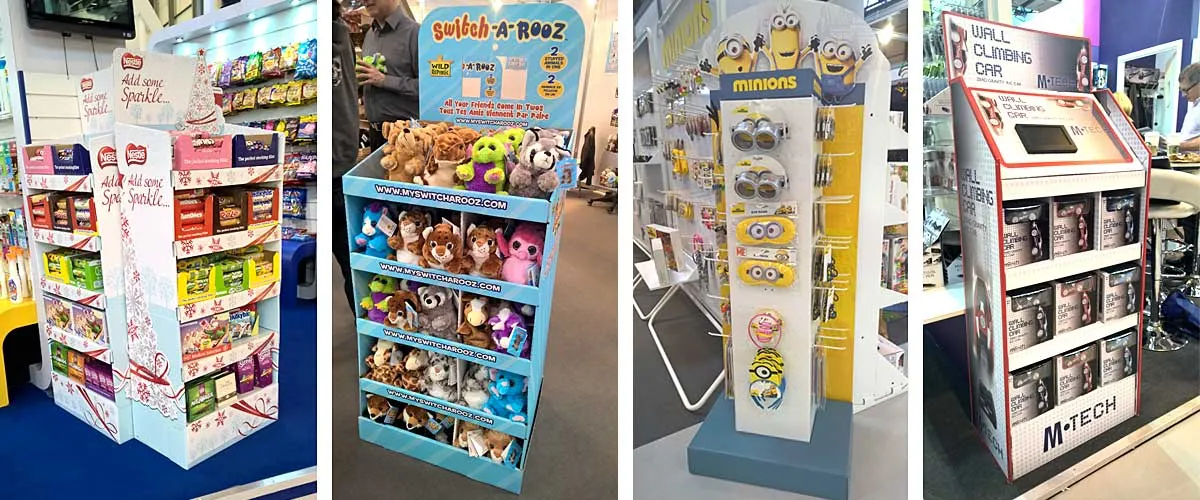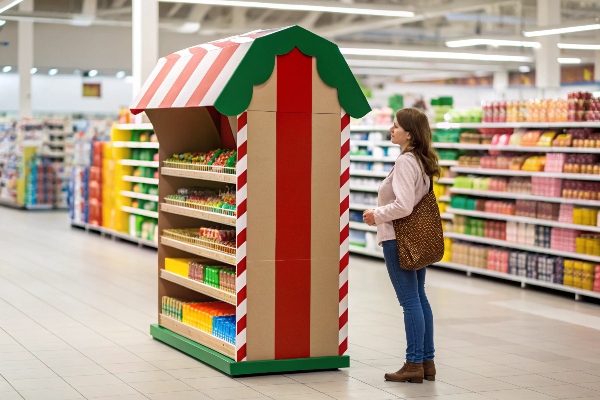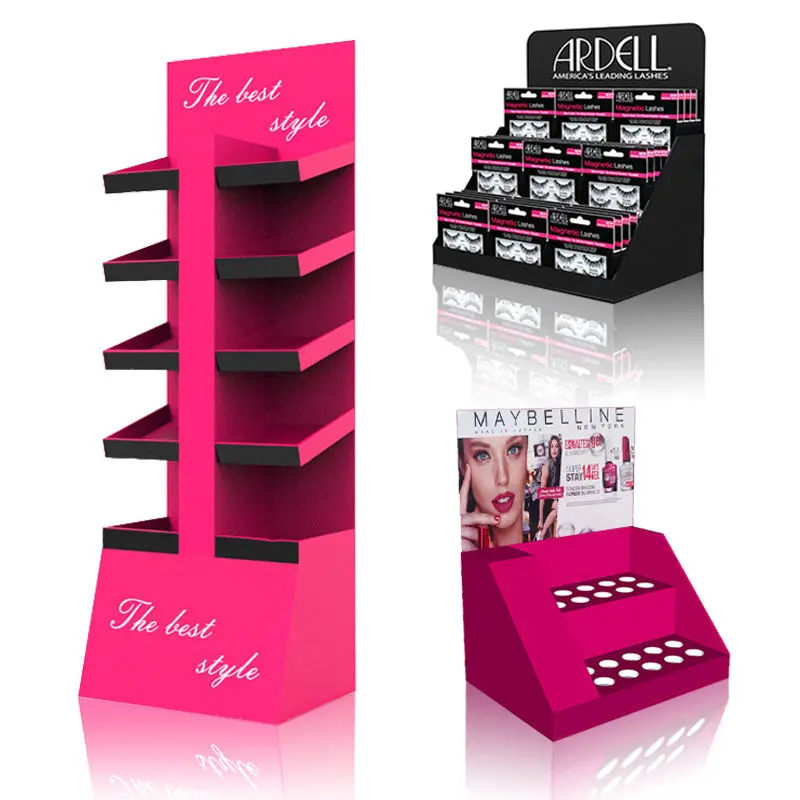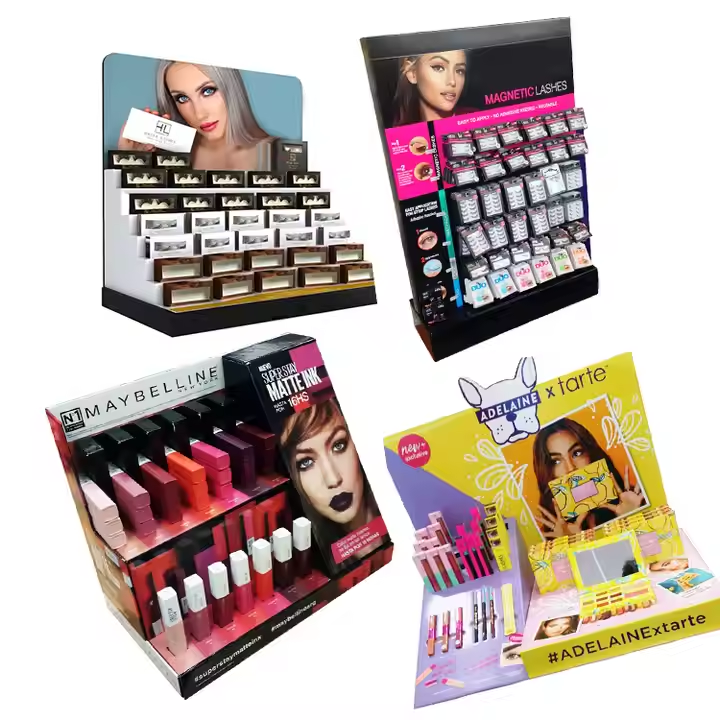Struggling to guess what buyers want in custom displays? Their varied questions can feel confusing. Let’s clarify the most common concerns to help you create displays that truly deliver.
Buyers primarily ask about making displays visually appealing, choosing the right products, attracting customers, and building a display that effectively sells. They focus on brand consistency, structural integrity, ease of assembly, and, most importantly, the return on their investment. These questions are the foundation of a successful project.

Over my 16 years in this industry, I have encountered just about every question a client could have. It’s never just about aesthetics; it’s about creating a powerful sales tool that performs for the brand. These questions are not roadblocks but rather a detailed map leading to a successful display. Understanding them is the first step in collaborating effectively with designers like me and my team. Let’s dive into the most frequent and critical questions I receive.
What's the key to making a merchandise display visually appealing1?
Does your display design feel messy or uninspired? You want it to grab attention, but it just gets lost in the aisle. The solution lies in a balanced and strategic design.
The secret to visual appeal is a mix of simplicity, strong branding, and a clear visual hierarchy2. Use color psychology3, effective lighting, and uncluttered layouts. The main goal is to direct the shopper's eye straight to the product, making it the hero without any distractions.

A visually appealing1 display does more than just look good; it communicates a message silently and efficiently. I always tell my design team, led by experienced people like Peter, that we must focus on the core principles that guide a shopper's attention. This isn't just about art; it's about the science of shopping.
The Power of Color and Light
Color is the first thing a customer's brain processes. Using your brand's colors creates consistency, but sometimes a bold, contrasting color can be what’s needed to stand out in a busy retail environment. Lighting is also critical. Good lighting can highlight product features, create a premium feel, and draw the eye from across the aisle. Poor lighting can make even the best product look dull.
Hierarchy and Flow
A display must tell a story in seconds. This is where visual hierarchy2 comes in. You need a primary focal point—usually your "hero" product. All other elements, from graphics to supporting text, should guide the eye toward it, not compete with it.
| Feature | Good Visual Hierarchy | Poor Visual Hierarchy |
|---|---|---|
| Focal Point | A clear hero product | Everything fights for attention |
| Graphics | Supports the product | Overpowers the product |
| Text | Short, scannable headlines | Long, dense paragraphs |
| Negative Space | Used to prevent clutter | Crammed with items or info |
I remember a client who insisted on putting five different messages on a small counter display. We created a prototype, and it was a mess. After we simplified it to one key message and a single hero product, their in-store sales for that item tripled. Simplicity sells.
How do retailers decide what to include in displays?
You've designed a great display, but your client can't decide which products to feature. This common problem can stop a project dead in its tracks. Let's clarify the strategy behind product selection4.
Retailers select items for displays based on new launches, high-margin products, seasonal trends, and top sellers. They also group complementary products to encourage larger purchases. The ultimate goal is to maximize sales and profit from that specific display's footprint.

Choosing the right products for a display is as important as the design of the display itself. It’s a decision based heavily on data and strategy, not just guesswork. In my experience, the most successful displays are stocked with products that have a clear purpose. There's no room for items that are just "nice to have." Every product needs to earn its spot.
The Profitability Matrix
Retailers live and die by their margins and sales volume. A great display often features a mix of products. For example, a high-volume, lower-margin "traffic driver" might be placed next to a lower-volume, high-margin item. The popular product draws the customer in, and the display then introduces them to a more profitable product they may not have considered otherwise. It is a classic strategy that works time and time again.
Strategic Product Grouping
Smart product selection4 is about creating a shopping solution, not just showing off items. Retailers think about how customers shop.
| Selection Strategy | Primary Goal | Example Product |
|---|---|---|
| New Launch | Create buzz and initial sales | A brand-new flavor of cereal |
| High-Margin | Boost overall profitability | Premium, single-origin coffee |
| Seasonal | Capitalize on timely demand | Grilling sauces in the summer |
| Cross-Sell | Increase basket size | Phone cases next to new phones |
By grouping items that go together, like pasta and pasta sauce, the display does the work of suggesting a complete meal, often leading to a bigger sale. Retailers use their sales data to identify these powerful combinations, ensuring the display isn't just taking up space but is actively increasing the average transaction value.
How do displays attract customers?
Your display is assembled and in the store, but shoppers are walking right past it. It is incredibly frustrating to see great work get ignored. The good news is there are proven methods to change this.
Displays grab attention using visual disruption5, psychological triggers6, and clear messages. A unique shape or bold color breaks the aisle's visual pattern. An interactive element7 or a compelling offer then engages the customer, inviting them to stop and consider the product.

The retail floor is a battlefield for attention. To win, your display can't just fit in; it has to stand out. From my years of experience, I’ve learned that attraction is a two-step process. First, you have to break the customer's "autopilot" mode as they walk down the aisle. Second, you have to give them a compelling reason to engage for more than a few seconds.
Breaking the Aisle's Monotony
Most retail shelving is uniform: long, straight lines of products. A custom cardboard display offers a chance to break this pattern with a unique shape, height, or graphic. I recall a project for a beverage company where we designed a display shaped like a giant bottle. It was impossible to miss in the flat, boring drink aisle. That visual disruption5 is the first hook. It makes people pause and wonder, "What's this?"
The Power of the "Three-Second Rule"
Once you have their attention, you have about three seconds to deliver your message. This is where clear, concise communication is vital.
| Attraction Method | Psychological Principle | How It Works on a Display |
|---|---|---|
| Color & Shape | Pattern Interrupt | A round display in an aisle of square shelves. |
| Clear Offer | Urgency / Value | "Limited Time Offer" or "Save 20% Today" |
| Interactivity | Curiosity | A QR code to "See it in action" or a lift-flap. |
| Storytelling | Emotional Connection | Images that show the product solving a problem. |
The headline must be big, bold, and easy to read. The main benefit should be obvious. A great display creates an "information gap"—it presents a benefit so appealing that the shopper feels compelled to step closer and learn more. It's not just about stopping them; it's about drawing them in.
How can a business build an effective retail display to sell a product?
You understand the need for a retail display, but starting the process seems complex and maybe even a bit overwhelming. The key is to follow a clear, step-by-step framework for success.
To build an effective display, start with a clear objective. Then, focus on a design that is brand-consistent, structurally sound for the product's weight, and simple to assemble. Ensure the messaging is sharp and includes a clear call to action.

Building a display that actually sells is a process. It’s a journey that goes from an idea to a physical tool in a store. Skipping steps is the most common mistake I see. My role, and the role of my company, is to guide clients through this process to ensure the final product is not just beautiful but also functional and profitable. A great display is a team effort between the brand, the designer, and the manufacturer.
The Design and Structural Brief
Everything starts with a detailed brief. It’s the foundation of the entire project. Before my team and I can even start sketching, we need answers. What are the exact dimensions and weight of the products? How many products will be on the display? Are there any retailer-specific guidelines we must follow? The more information we get upfront, the fewer costly revisions there will be later. A good brief saves everyone time and money.
From Prototype to Production
Never skip the prototype stage8. A digital rendering looks nice, but a physical sample is where you discover potential problems.
| Stage | Key Objective | My Pro-Tip |
|---|---|---|
| 1. Briefing | Define all requirements clearly | Always provide actual product samples. |
| 2. Design | Create the visual and structure | Keep the "three-second rule9" in mind. Simple wins. |
| 3. Prototyping | Test and validate the design | Assemble the prototype yourself to test ease. |
| 4. Production | Manufacture at scale efficiently | Partner with a manufacturer with proven experience. |
| 5. Logistics | Ensure easy in-store setup | Include clear, visual assembly instructions10. |
At my company, we first create a "white sample"—an unprinted version made from the final material. This lets us test the structure and product fit. Once that's approved, we create a fully printed prototype. This process ensures there are no surprises during the main production run. It’s a small investment upfront that protects against a much larger, costlier failure.
Conclusion
Answering key buyer questions on visuals, product choice, and customer attraction is vital. A successful display results from a clear brief leading to a brand-aligned, structurally sound sales tool.
-
Explore this resource to learn how to enhance the visual appeal of your displays and attract more customers. ↩ ↩
-
Understanding visual hierarchy can help you design displays that effectively guide customer attention. ↩ ↩
-
Explore the impact of color psychology on consumer behavior and how to apply it to your displays. ↩
-
This link offers valuable strategies for selecting the right products to feature in your displays. ↩ ↩
-
Learn how to use visual disruption to capture attention and draw customers to your displays. ↩ ↩
-
This resource delves into psychological triggers that can enhance customer engagement with your displays. ↩
-
Discover innovative interactive elements that can engage customers and enhance their shopping experience. ↩
-
Learn about the benefits of the prototype stage in identifying potential issues before production. ↩
-
Discover the importance of the three-second rule in capturing customer attention effectively. ↩
-
Explore effective practices for creating clear assembly instructions that enhance user experience. ↩






